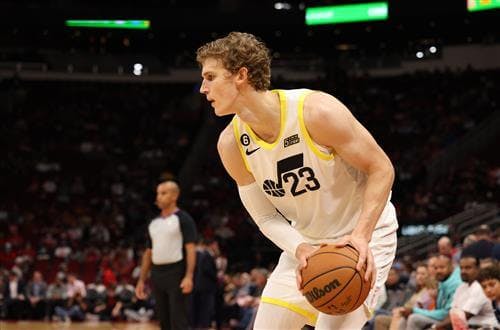
We're less than two weeks into the 2022-23 NBA season, and with a few exceptions, almost everything is upside down.
That seems about right.
Small samples, rust and high variance always combine to make October and November a little strange. Flash back to a year ago at this time, and you'd see the 64-win Phoenix Suns toting the same 1-3 record as a Houston Rockets team that'd go on to win 20 games. That's an indicator that most of the double-take-inducing stories we're following now will eventually align more closely with expectations. But we shouldn't let that detract from the oddities currently taking us by surprise.
And if nothing else, it'll be fun to look back at all this early-season strangeness in a few months. You know, when Lauri Markkanen and the Utah Jazz are hoisting the Larry O'Brien Trophy.
The Utah Jazz Are Too Good to Tank
We came into the season well aware that a handful of teams had no plans to compete for the playoffs, and nobody's intentions were clearer than the Utah Jazz's.
In June, the second-winningest head coach in franchise history, Quin Snyder, basically said "thanks, but no thanks" to the two years remaining on his contract. When Utah subsequently traded four starters (including two All-Stars) for a haul focused on future draft picks, you got the feeling that Snyder knew of the impending rebuild and had decided a year off sounded better than presiding over a 17-win season.
What remains of the strip-mined Jazz roster clearly feels differently. These guys aren't taking a single second off, let alone a full year.
The Rudy Gobert trade returned several rotation-caliber pieces, led by the relentless Jarred Vanderbilt, sharpshooter Malik Beasley and rookie defensive ace Walker Kessler. The deal that sent Donovan Mitchell to the Cleveland Cavaliers returned bucket-hunter extraordinaire Collin Sexton and apparent star Lauri Markkanen.
Those five players, plus Kelly Olynyk, another trade acquisition, have all averaged significant minutes this season, with Vanderbilt, Olynyk and Markkanen joining holdovers Jordan Clarkson and Mike Conley in the starting five. Collectively, they've produced a result no one—not Utah's fans, not the broader NBA community and certainly not even the Jazz themselves—saw coming.
Utah hammered the theoretically contending Denver Nuggets in their opener and then even more shockingly went into Minnesota and bested Gobert's Minnesota Timberwolves in overtime. Everyone's early-season darling New Orleans Pelicans went down next, and the Jazz were suddenly 3-0—an absurd mark for a team that many saw as front-runners in the race to the bottom of the standings.
We can pump the brakes on an 82-0 campaign; Utah fell to the more effectively tanking Houston Rockets and will absolutely sell off its many remaining quality pieces for future assets, perhaps in a hurry if the wins keep coming in larger-than-anticipated quantities. But still, Utah playing sound, respectable ball is a reminder that the best-laid front-office blueprints to tank can run into problems when the players don't go along with the plan. And perhaps the even more intriguing takeaway is the Jazz got so much valuable talent in addition to all the picks they coveted that they could win the Gobert and Mitchell trades a second time.
Maybe Markkanen and Vanderbilt are keepers, and Sexton got a four-year, $71 million contract upon arrival as part of the sign-and-trade agreement. But so many of the other players who came over in Utah's flurry of offseason action could be flipped again. In the end, the most surprising thing of all is that while everyone agreed the Jazz won their blockbuster trades, nobody realized just how extreme those victories were.
The Jazz can't rebound to save their lives, and opponents will eventually stop hitting threes at a clip that roughly equates to Russell Westbrook's career percentage. But these guys are playing hard, forcing loads of turnovers and generally operating as if winning is still the point.